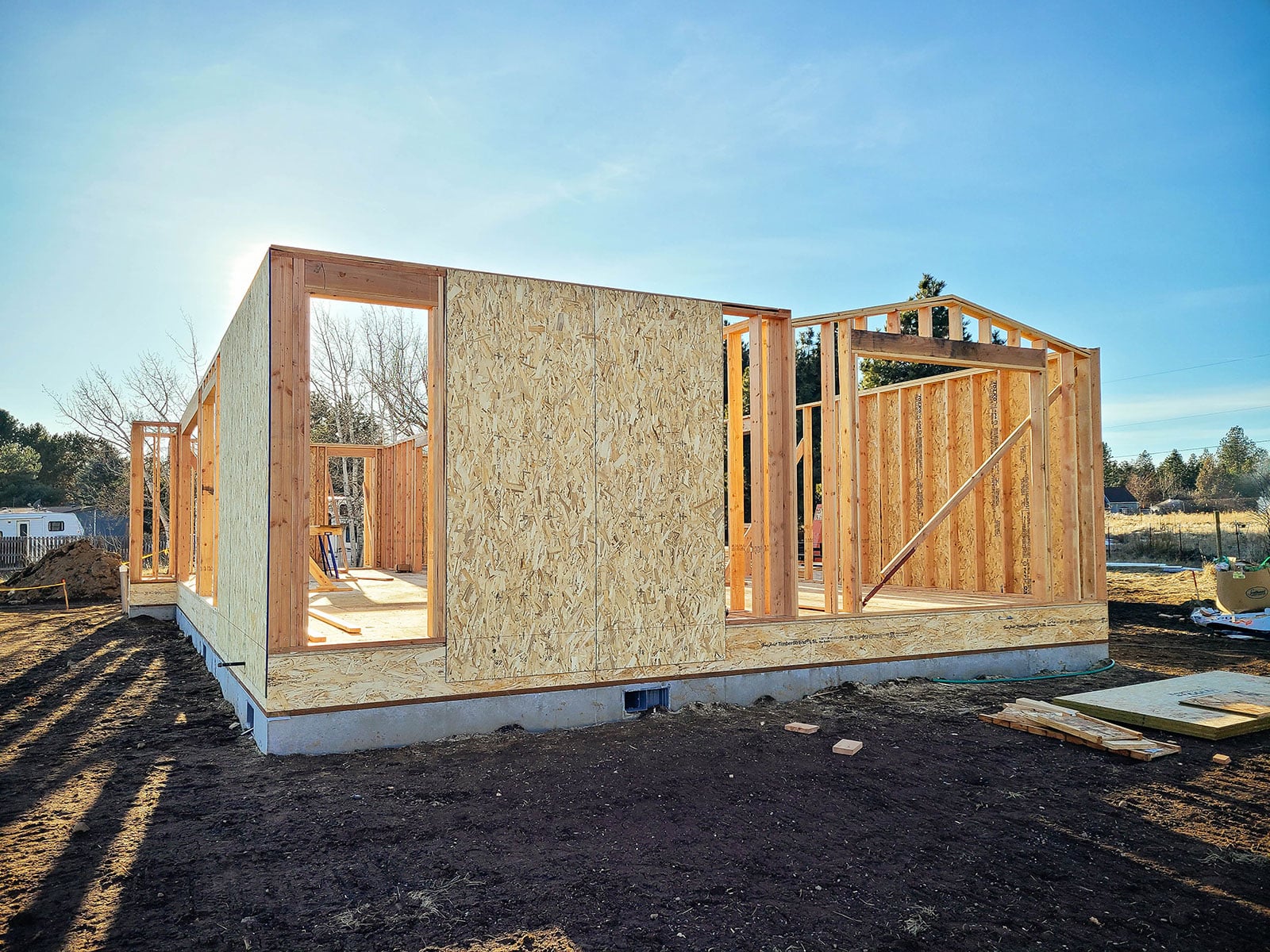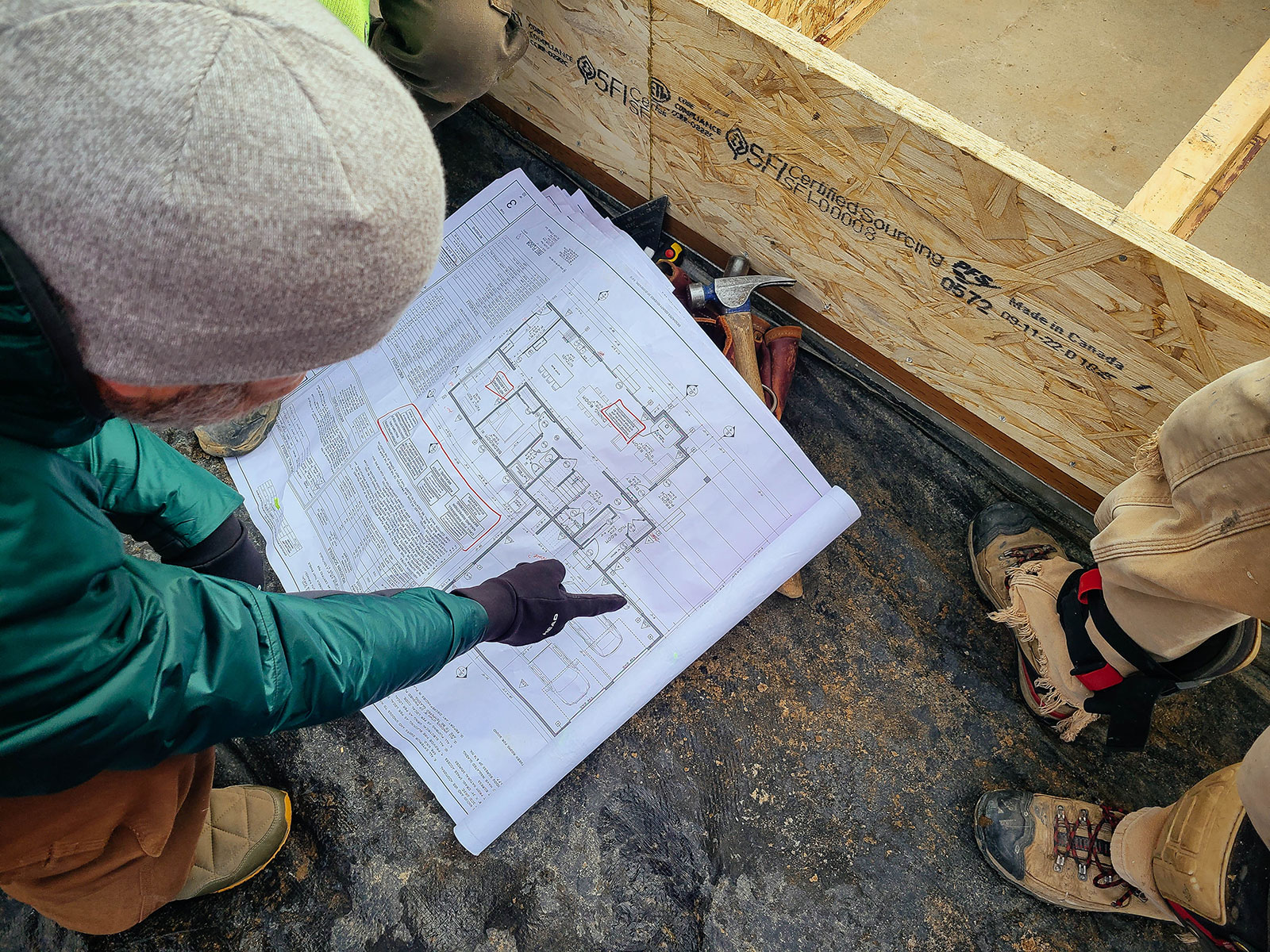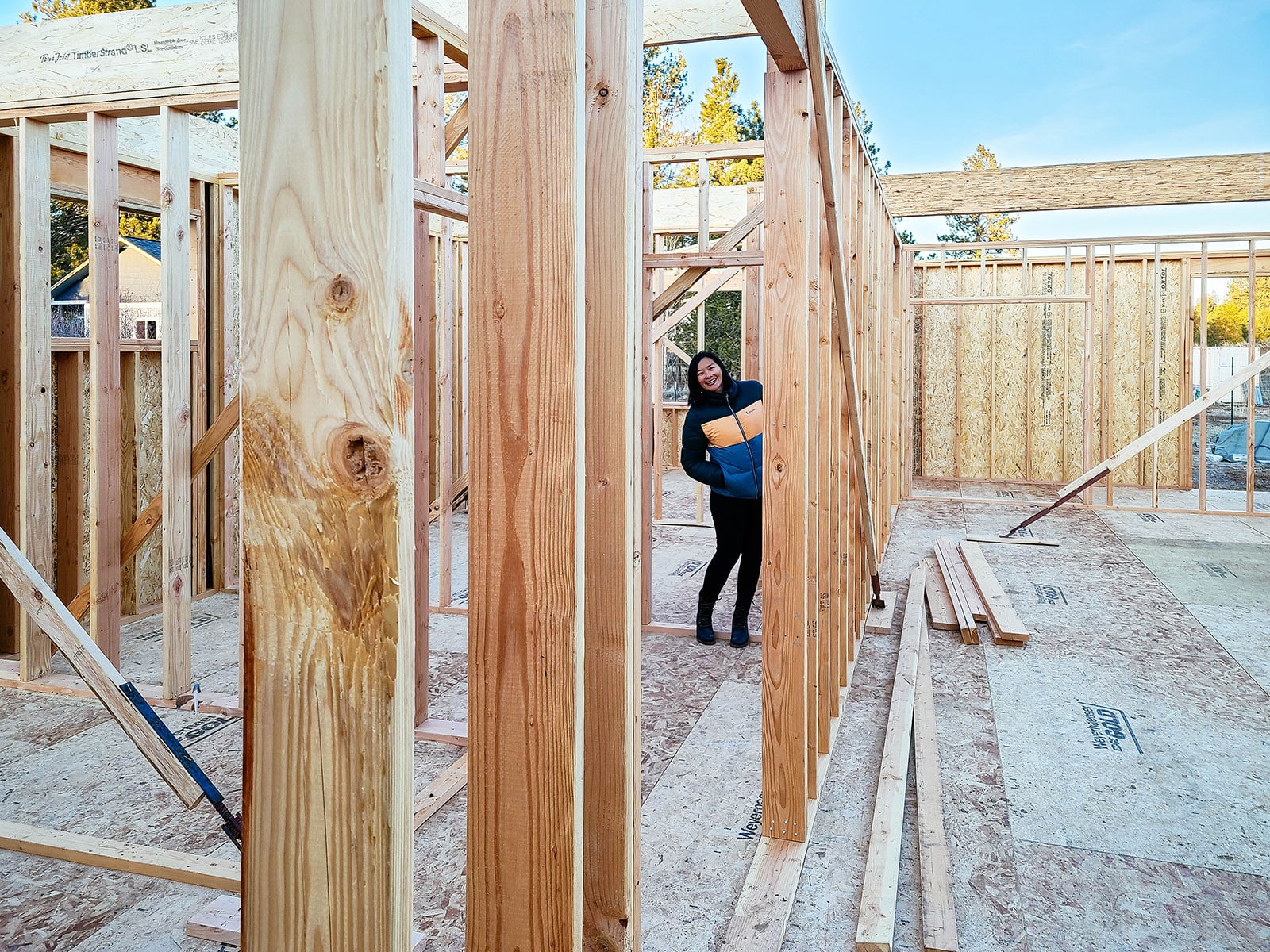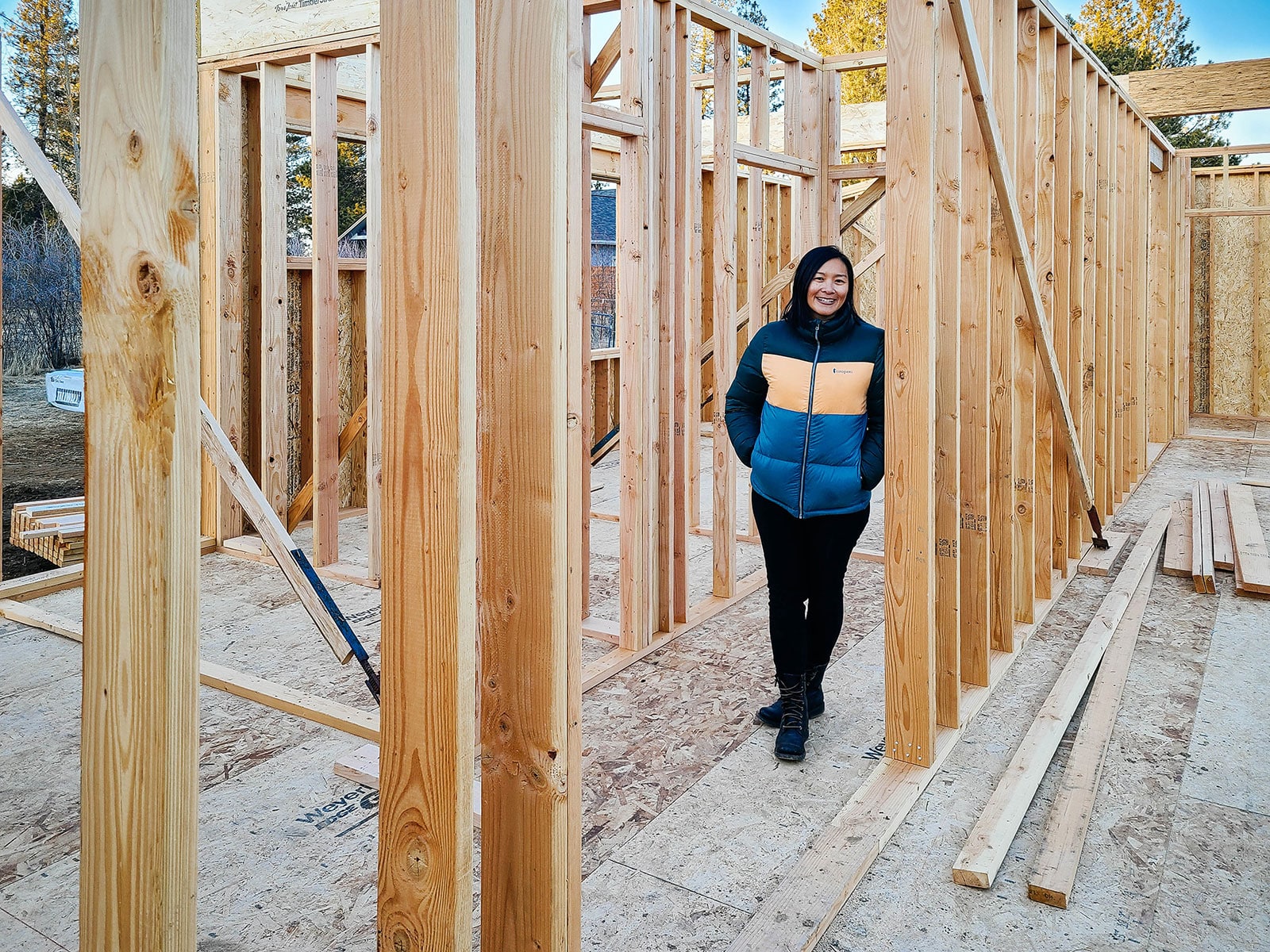Before my husband and I broke ground, I never understood how people could afford to build a house. I knew you could take out a loan to pay for construction, but what kind of loan? For how much? For how long?
I was overwhelmed by all the details when I first started, but thanks to a super patient loan officer—and plenty of conversations with banks from the day we bought our land to the day we closed on our construction loan, three years later—I’ve learned a lot and hope to demystify the process a bit for anyone else who’s looking to build a house.
Before I get any further, I should make it clear that I am not a real estate or banking professional, and my personal experiences in this article should not be construed as legal or financial advice. If you want to get a construction loan, please consult with qualified local professionals (such as real estate brokers, loan officers, lawyers and the sort) for help with securing the right loan in your specific situation.
If you’ve been Googling construction loans but all the information is making your head spin, consider this sort of a “101 of Construction Loans” to help you wade through the murky waters of construction financing.
While my experience is limited to my own situation, this is how I’d explain the process to a friend. It’s what I believe every first-time borrower should know before walking into a bank.

Mortgages vs. construction loans
Mortgage loan
If you’ve ever bought a home, you’re likely already familiar with mortgages. A mortgage is a type of loan you get to help you buy an existing home. The bank hands over the money to the seller in one lump sum, and you agree to pay back the loan over a period of time (usually 15 or 30 years) until it’s fully paid off. Simple, right?
The amount of your mortgage is determined by your credit profile, income, assets, debt, and the value of the home you want to buy. Depending on the mortgage program you qualify for, your down payment may range from 0 to 20 percent.
Construction loan
A construction loan is a short-term loan (typically 12 to 18 months) that you get to help you pay for the materials and labor needed to construct a home.
It differs from a mortgage in two key ways:
- A construction loan funds in stages that match the cost of construction as it progresses.
- You only make interest payments on a construction loan (not principal and interest).
At the end of the build, the construction loan is either paid in full or converted to a permanent mortgage (the latter is called an all-in-one construction loan or construction-to-permanent loan).
Construction loans are riskier (since they aren’t secured by a completed house) so they typically require a higher down payment (20 to 30 percent) and an interest rate around 1 percent higher than a standard mortgage rate.

How a construction loan works
You need to start with a set of completed construction drawings (blueprints)
This is the part that always throws me for a loop. You can’t get a construction loan until you have your blueprints. But you don’t know if the house you’ve designed is one you can afford. You don’t know what you can afford until you talk to a bank and apply for a construction loan.
I don’t have much advice for this, unfortunately. You almost go into it blindly, designing a home that you hope will be affordable.
That’s why it’s important to choose an architect or designer who understands your needs and budget, and for you to know what your financial limitations are.
My own designer actually shared a story of how he had designed a large, elaborate house with all the bells and whistles, and the couple who’d hired him never ended up building it. They realized they couldn’t afford to!
Needless to say that if you want to build a custom home, you should have your finances in order and more savings than you think you’ll need. (This is why my husband and I originally postponed our project and lived in a teardown for two years before we started building.)
You’ll initially pay for a lot of costs out-of-pocket (such as design and engineering, testing, and permitting) and while these costs can be paid from the construction loan at closing (assuming they were included in the cost breakdown), it could be months before you’re reimbursed.
What to Know
The type of property can make or break your homebuilding dreams. I wrote a tell-all guide on how we found land (without a real estate agent) as well as what you should know before buying land (including the stuff no one talks about). Hopefully these resources can help you figure out when it’s a good deal and when it’s time to walk away.
In these early stages, it’s helpful to shop around for a builder and get estimates on your project. You can then use the estimates to apply for your construction loan, see what you qualify for, and choose your builder after that.
You need to qualify for the right type of loan
So, you’ve got your blueprints and job estimates in hand and you’re ready to get things rolling.
There are generally two types of construction loans available for borrowers:
- Standalone construction loan: This type of loan must be paid in full when building is complete. You pay interest during construction, and then either make a balloon payment in the end out of your own funds, or take out a mortgage to pay off the construction loan.
- All-in-one construction loan: Also called a construction-to-permanent loan or single-close construction loan, this is the easier option. While building, you pay interest on the construction loan. Once building is complete, the construction loan converts to a permanent mortgage at the same interest rate you’ve been paying. You only go through one closing for this, so you save money on additional fees.
You’ll start the qualification process by submitting proof of income to the bank, along with various other paperwork that allows them to pull your credit and determine your debt-to-income ratio. It’s not unlike applying for a regular mortgage at first.
What to Know
If you’re self-employed, you’ll have to jump through a few extra hoops to qualify for a construction loan. I wrote a full guide here on how to get a construction loan while being self-employed.
From here your finances will be scrutinized hard. The bank will look at all your assets, your debt and other financial obligations, and your credit history.
They’ll need to see that you have sufficient funds for the down payment and closing costs, as well as additional funds for making your mortgage payments once the build is complete. (Our own bank required us to have six months of principal, interest, taxes, and insurance in reserves.)
On top of that, the bank will typically add a contingency fund to your construction loan that covers cost overruns (like the price of your roof going up after you break ground). That means you should be prepared to take out a loan that’s more than what it actually costs to build your house.
The contingency fund is a necessary evil, as it helps buffer you from unexpected cost increases that force you to pay out-of-pocket. The bank puts it in there to ensure the house will get built regardless of market fluctuations.
Our own bank required a 15 percent contingency fund (which means 15 percent of the construction cost was added to the loan amount). While we tried to save this for any surprises that might come up, we were allowed to use the contingency to pay for upgrades and splurges (like our countertops, where we went over our allowance by double—yikes).
Your builder also needs to be qualified
Once you get your initial credit approval, things start getting more complex.
Because the bank will be the lien holder on your property, they’ll need to evaluate your builder’s experience and financial health.
While you’re gathering all the documentation needed to complete your loan application, your builder will also have to do some legwork.
This includes submitting their general contractor’s license and insurance bond, portfolio or summary of experience, list of major suppliers and subcontractors, proof of general liability insurance, and client references.
Why go through all this? Because the bank needs to make sure that your builder will actually complete the build in a timely and professional manner.
The bank will also require course of construction insurance, a special policy that covers accidents or disasters on the job site. (It’s not the same as workers’ comp or general liability.)
For example, if your house burns down while it’s still under construction, course of construction insurance will cover that. Some builders include this cost in their contracts, while others have you purchase it separately.
The bank will order an appraisal
The bank will look at your land and make sure it falls within their lending guidelines. (Some banks will only work with lots that have existing utility access, for example, or lots under a certain size.)
They’ll ask for a complete set of construction drawings and order an appraisal of the finished value of the house. It might seem impossible to appraise a house that doesn’t yet exist, but the process is fairly straightforward.
The appraiser gets comps from nearby properties. They drive to your lot to assess its location and features. They study your construction drawings and make note of the size, number of rooms, number of fixtures, quality of finishes, and the type of roof, siding, windows, doors, and driveway you will have—everything that goes into building your house.
From all that, they can estimate what the finished value of your property will be.
A bank will usually lend you 70 to 80 percent of the value of your finished home
Let’s say the appraisal came back and your (soon-to-be) house was appraised at $500,000. The bank will lend you $350,000 to $400,000. Sometimes that amount is enough to cover the entire cost of construction.
But if it actually costs $450,000 to build your house and the bank will only lend you $400,000, that means you’ll need to come up with the difference of $50,000 (plus closing costs and other fees) to get approved for a construction loan.
In another scenario, let’s say you only qualified for a $300,000 loan but your house costs $450,000 to build. You’ll need to have at least $150,000 cash on hand to get approved for a construction loan.
Banks use what’s called an LTV (loan-to-value ratio) to assess their lending risk. LTV is the amount of the loan compared with the value of the property, expressed as a percentage.
While 80 percent is the maximum that a bank will lend you, they typically like to see a lower LTV as it means less risk for them if you’re more invested in your build.
In fact, a bank may ultimately deny your construction loan if you’re right at that 80 percent threshold but don’t have steady cash flow (because: more risk).
With a construction loan, the bank pays the contractor (not you)
Continuing with our hypothetical loan process, let’s say you do in fact get the construction loan. (Woohoo!)
Once you break ground, your general contractor starts requesting draws (payments) from the bank after each phase of construction is completed.
Sometimes the bank will send someone out to the job site to inspect what was done and make sure that the work has, in fact, been done to spec. If it doesn’t pass inspection, your contractor doesn’t get paid until the issues are resolved.
If it does pass inspection, you sign off on the draw request, and then the bank pays that amount to the contractor.
Each bank has its own draw schedule, but you can count on draws happening regularly throughout the build.
As each draw is made, your loan balance will adjust to reflect an up-to-date amount owed on the loan.
If you’re lucky enough to not go over budget, you might not even use the full amount of your loan (in which case, your mortgage payment will be lower than originally estimated—a win!).
You only make interest payments during construction
When you close on a construction loan, you haven’t actually borrowed any of the money yet, so no payments are due. But then your builder excavates the site and pours the footings. A draw is made from the loan to pay your builder, and you start making payments.
While your house is being built, you only pay interest on the portion of the loan that’s been drawn by your contractor.
Let’s say you’ve drawn (or borrowed) $50,000 of your $400,000 construction loan.
The interest rate on your construction loan is 6 percent. That 6 percent is an annual number, and 6 divided by 12 is 0.5, so your monthly interest rate is 0.5 percent.
You’ve borrowed $50,000 so far, so 0.5 percent of that is $250. That’s going to be your interest payment next month.
If you draw another $25,000 next month, then your interest payment the following month will be $375, because you’re paying 0.5 percent on the total amount you’ve borrowed to date. The worst month will be the month your builder finishes the house, because the final payment will be drawn.
At that point, you’ll have likely borrowed the full amount of your construction loan, so your payment will be 0.5 percent of $400,000, or $2,000.
Once you convert to a permanent mortgage, that new loan will pay off the construction loan, and you’ll begin making mortgage payments (typically a month or two after).
Staying on schedule is paramount
This is where it’s super crucial to hire a builder who’s organized and able to stay on schedule. If one job gets hung up, it affects all other jobs in the schedule like dominos.
The bank specifies a certain timeframe that your home needs to be completed in, usually 12 or 18 months. Should your project go over the bank’s schedule, you’ll end up paying additional interest and possibly penalties or fees (based on the terms of your loan).
Even though my husband and I had a simple build and didn’t anticipate any problems, we opted to pay a small fee to extend our loan term to 18 months. (This fee was included in our closing costs.)
If your bank offers this, it’s worth it for the peace of mind knowing that supply chain delays or inclement weather won’t cost you more money down the line if you go over schedule.
There’s no penalty for completing the build early—if your house is built in 12 months after all, then the construction loan converts to a permanent mortgage as planned. (In our case, we completed our build in 11 months and opted to continue paying interest before converting the loan. This gave us extra time with a low monthly payment so we could buy furniture and rebuild our savings before our real mortgage kicked in.)
Once building is complete, the construction loan is either paid in full or converted to a permanent mortgage
Depending on the type of loan you got, you’ll either pay off the construction loan in full, or your construction loan will convert to a permanent mortgage that you’ll pay off over time just like any other mortgage.
Congrats, you’ve made it!

The construction loan process at a glance
Here’s how the loan process moves along once you choose a bank:
- Meet with a loan officer to get your loan preapproval (aka initial credit approval).
- Submit all the required borrower, builder, and project documentation.
- The bank provides your loan disclosures.
- The bank approves your builder and project.
- The bank orders a home appraisal.
- Your final loan application is submitted to the underwriter.
- The underwriter reviews the loan documentation and appraisal for final approval.
- You (or your builder) set up course of construction insurance.
- Your loan officer confirms the terms of the construction loan.
- All documents are sent to the title company for signing.
- You sign the documents at the title company and pay any applicable costs.
- Construction loan is funded.
- Construction begins.
- Draws are made as construction progresses.
- You begin paying interest on the amounts borrowed.
- Once your house is complete, the final draw is made and the construction loan is either paid off or converted to a permanent mortgage.
Follow along as Garden Betty Builds a House:
- And Just Like That, We Are Officially Landowners
- Why We Decided to Build a Custom Home
- Pre-Construction Progress: Septic Feasibility, House Plans, and Property Cleanup
- How We Found Land to Build On—and How You Can, Too
- A Surprise Move With a Silver Lining
- The Home Building Begins: A Recap of the Last 5 Years
- Demo Day: Tearing Down Our Old House
- What You Should Know Before Buying Land (My Real-Life Tips)
- Construction Loans: What I Wish I’d Known As a First-Time Borrower
- How to Get a Construction Loan While Being Self-Empoyed—My Experience
















great content and really clear explanation, thanks for that!